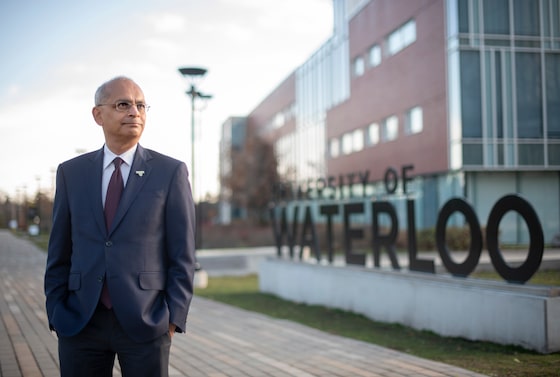Standing at the reception desk of Dr. Nora Chen’s family practice in East Vancouver, I watch as Arjun Singh, a 46-year-old software developer, flips through a pamphlet about cancer screening. “My father died of colon cancer at 62,” he tells me quietly. “But I’m confused about when I should start getting tested. Different doctors have told me different things.”
This confusion isn’t unique to Arjun. Across Canada, patients and physicians alike navigate a patchwork of cancer screening recommendations that vary by province and sometimes contradict national guidelines. Last month, an independent expert panel delivered a blistering report to the Public Health Agency of Canada, calling for a complete overhaul of how screening guidelines are developed and communicated.
The 217-page report from the Canadian Task Force on Preventive Health Care highlighted how our current system leaves vulnerable populations underserved and creates unnecessary anxiety for others through overscreening. Dr. Chen, who allowed me to observe her practice for this story, sees these gaps firsthand.
“I have patients who drive themselves crazy with worry about cancer, demanding tests they don’t need, while others who truly need screening fall through the cracks because they face barriers we haven’t addressed,” she explains, between patient appointments.
The task force report points to troubling statistics. Despite decades of screening programs, cancer remains the leading cause of death in Canada, with over 85,000 Canadians dying from various forms of the disease annually, according to Statistics Canada. Particularly concerning is how screening rates drop significantly among Indigenous communities, new immigrants, and those living in poverty.
“What we’re seeing is a system that works reasonably well for middle-class, urban Canadians who speak English or French and have flexible work schedules,” says Dr. Ainsley Matthews, an oncologist at BC Cancer who was not involved in the report but reviewed it for this article. “For everyone else, we’re failing.”
When I visited the Heiltsuk Nation’s health centre in Bella Bella last winter, nurse practitioner Jessie Williams showed me a calendar where staff track community members due for screening. “We’ve created our own system because the provincial one doesn’t work for remote communities,” she told me. “When the mobile mammography unit comes once a year, we basically shut down the community to get everyone in.”
The task force recommends establishing a permanent, independent Canadian Centre for Health Evidence that would standardize screening guidelines nationally while allowing for regional adaptations based on population needs. But perhaps most revolutionary is their call for a fundamental shift in how we approach screening conversations.
“For too long, we’ve treated cancer screening as a simple yes-or-no decision,” says Dr. Brett Thombs, who chaired the task force. “In reality, it should be a nuanced discussion about potential benefits and harms, individualized to each person’s risks, values, and circumstances.”
This approach, called shared decision-making, represents a significant departure from decades of public health messaging that portrayed cancer screening as an unquestionable good. The science tells a more complex story.
Take mammography screening for breast cancer. While it reduces mortality in certain age groups, it also leads to significant overdiagnosis – the detection of cancers that would never have caused symptoms in a person’s lifetime. Health Quality Ontario estimates that for every 1,000 women screened regularly over 10 years, only 1-2 breast cancer deaths are prevented, while about 10 women undergo treatment for cancers that would never have threatened their lives.
“We’ve been afraid to have honest conversations about the limitations of screening,” says Dr. Chen. “Patients deserve better information to make truly informed choices.”
The report also calls for culturally appropriate approaches that address historical mistrust of medical systems. When I visited the Immigrant Services Society of BC last month, health navigator Mei Lin described creating cancer screening workshops specifically for newcomer communities.
“Many of our clients come from countries where preventive care doesn’t exist, or where cancer is considered a death sentence,” Lin explained. “We don’t just translate the medical information – we contextualize it within their cultural understanding of health and illness.”
Financial barriers also prevent many Canadians from accessing screening. While the tests themselves are covered by provincial health plans, many face indirect costs. Single mother Jacqueline Dumont, whom I met at a community health centre in East Vancouver, described missing three mammogram appointments because she couldn’t afford childcare or time off from her hourly wage job.
“Every time I miss work, that’s groceries we don’t have,” she told me. “I know screening is important, but feeding my kids comes first.”
The task force recommends expanded evening and weekend screening options, transportation assistance, and childcare support to address these practical barriers. They also call for better integration of primary care and screening programs to reach those without regular healthcare providers.
Implementation of these recommendations won’t be simple or cheap. The report estimates initial costs of $45-60 million annually to establish the new evidence centre and reform screening programs. However, proponents argue the long-term savings from reduced overtreatment and more effective early detection would ultimately save the healthcare system money.
As I finish my conversation with Arjun Singh in Dr. Chen’s waiting room, he tells me he’s decided to get screened based on his family history, despite being younger than the standard guideline age. “I wish the system made this clearer,” he says. “It shouldn’t take losing a parent to cancer to figure out what care you need.”
That sentiment captures the heart of the task force’s message: Canada needs cancer screening that responds to individual circumstances within a coherent national framework. The question now is whether our fragmented healthcare system can deliver on this vision of personalized yet equitable cancer prevention.






